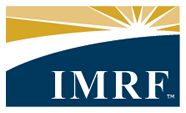Definitions
A pension is a commitment on the part of an employer to provide retirement benefits. The employee (member) defers a portion of his or her salary that the employer holds in trust. That money grows over time and is paid to the member after he or she retires in the form of monthly payments payable for life.
A traditional pension, like IMRF, is a "defined benefit" (DB) pension. Under a DB plan, the amount of the retirement benefit is based upon a formula that includes the member's final salary and years of service (also known as "service credit").
The amount of the pension is not based on the value of the member's account. In addition, DB pensions are payable for life; the member can never outlive his or her pension.
A different type of retirement plan is a "defined contribution" (DC) plan, such as a 401(k) plan in the private sector. Under a DC plan, the future retirement benefit is based upon how much the participant contributed and the earnings made on those contributions.
Funding
A defined benefit pension plan's funding status is a common measure of the plan’s health and is expressed as a percent. It illustrates the relationship between the benefits promised and the assets needed to pay those benefits.
It is important to remember that a pension plan's funding status is a "moving target." The value of a plan's benefit promises and assets change. When considering the health of a pension plan, you should look at the plan's funding status over the long term. And if a pension plan is underfunded, you should look at the measures the plan is taking to improve its funding status.
A plan's benefit promises-also known as its "actuarial liability"-is similar to a mortgage. Just as you don’t need to pay off your mortgage all at one time, a pension plan does not need to pay all of its benefit promises at one time. What you need is a plan to pay your mortgage payments (or benefit promises) when they are due.
IMRF believes in 100% funding. Working toward 100% funding ensures that the money will be available when the benefit promises are due.
Pre-Funding
A defined benefit pension plan, like IMRF, is designed to be pre-funded. That means all the money needed to pay a lifetime pension is available when a member retirees.
You can contrast that with a "pay-as-you-go" system, such as Social Security. Contributions made by today's workers are used to pay today's retirees' Social Security benefits for services rendered in the past.
Pre-funding public pensions helps lower costs to taxpayers over the long term. Studies have shown that better funded plans earn higher returns on their investments. In addition, pre-funding creates higher investment balances resulting in higher investment income. Higher investment income and higher investment balances translate to lower employer contribution rates.
Pre-funding also helps ensure that the cost for workers' pensions are being paid by today's taxpayers and that tomorrow's taxpayers are not paying for government services rendered in the past.
Differences Between Defined Benefit and Defined Contribution
Two key differences exist between a traditional defined benefit (DB) pension and a defined contribution (DC) plan:
Investment Risk
Under a DB plan, the employer assumes the investment risk. The amount an employer contributes to a DB plan depends on a number of factors, its members; ages, years of service, salaries, etc. as well as the return on investments. If investment returns are low, the employer's contribution increases. Conversely, if investment returns are high, the employer's contribution decreases.
The amount of the member's contribution is often fixed by law. Returns on investments do not affect the amount of the member's contribution. Under a DC plan, the participant assumes the investment risk. Within certain guidelines, the participant has control over how much he or she contributes to the plan, as well as how those contributions are invested. However, poor investment decisions or negative investment returns due to market performance can result in lower amounts available at retirement.
Longevity Risk
Under a DB plan, the member can never outlive his or her pension. Once a member "vests" (earns enough service to become eligible for a pension) that pension is guaranteed and is payable for the life of the member. The amount of the pension is based upon a formula, not on the value of the member's account. Under a DC plan, the amount of the retirement benefit is unknown until the participant retires. Also, it is possible that the participant could outlive the value of his or her account.
Public Pensions and the Illinois Economy
Although some retirees move out of state, in fact, 85% of retired municipal workers remain in Illinois and plow their retirement dollars back into the state's economy. In 2021, IMRF paid $2.19 billion to retirees in Illinois. Statewide, IMRF pension benefits supported over 20,495 jobs. These pension benefits further supported the generation of approximately $3.08 billion in total economic activity.
In addition, a secure pension for municipal workers helps them remain financially independent when they retire, and helps minimize the likelihood that they will become financially dependent on government programs or on family members.

